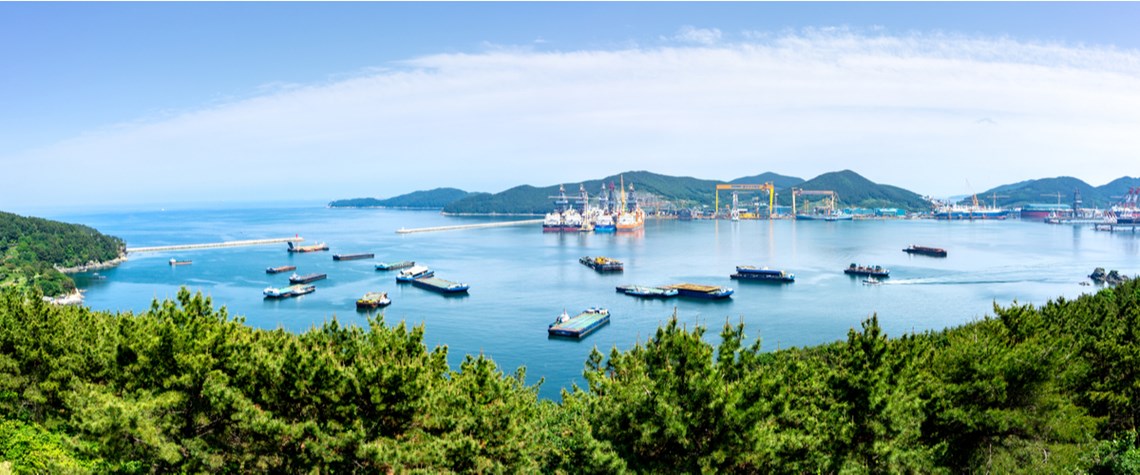South Korea’s Daewoo Shipbuilding and Marine Engineering (DSME) handed over in mid-June another floating storage and regasification unit (FSRU) to its operator, US LNG firm Excelerate Energy. Despite a current LNG price bloodbath, it has been another busy month in LNG fleet expansion.
The Excelerate Sequoia has a storage capacity of 173,400m³ of LNG. It can be operated as an FSRU, where it can regasify cargoes and deliver to a pipeline grid or large end-user, or as a merchant LNG transport vessel servicing conventional LNG terminals.
According to Petroleum Economist data, the ship is the 599th in the global LNG fleet, including dedicated and converted FSRUs as well as 12 LNG bunkering vessels. The International Gas Union (IGU) put those numbers at just 472 at the end of 2017 and 525 at the end of 2018, representing a 27pc jump in vessel numbers in just two-and-a-half years.
There are also 170 more ships on order, Petroleum Economist estimates. And that figure does not include any vessels in the expansion Qatar Petroleum (QP) announced in early June.
Reserved capacity
The largest LNG producer agreed a deal with DSME and its fellow Korean shipbuilders Hyundai Heavy Industries and Samsung Heavy Industries to “reserve a major portion of their LNG ship construction capacity” through to 2027. QP believes it has “secured approximately 60pc of the global LNG shipbuilding capacity” and the deal will lead to the construction of 100+ new vessels.
This breakneck expansion is all very well as long as LNG supply and demand, and thus the need for shipping, continue to grow. But the International Energy Agency (IEA) warned this month that, while supply capacity continues to rise, global gas demand is likely to fall by 5pc this year and demand growth in 2021 and 2022 will be at lower than previously expected levels.
A current supply glut and low prices have put higher-cost LNG liquefaction projects at risk of having to shut in uneconomic production. Going forward, the IEA suggests that weaker demand and prices may harm the investment case for planned new supply projects. And fewer molecules produced necessarily mean fewer molecules to ship, which could see the LNG fleet expanding more than needed.
The new Excelerate boat itself may be able to escape a challenging merchant vessel environment. In January, the firm agreed with Pakistan’s Engro Elengy Terminal Ltd (EETL) to expand the latter’s Port Qasim LNG terminal by swapping the new ship in to replace the Excelerate Exquisite currently in situ there. But that just exposes the latter vessel to either taking its chances in the market or finding a new FSRU customer.
The forecasts of depressed gas demand on the back of post-Covid economic growth woes may make this a trickier proposition. On the other hand, sustained low gas prices may make the economics of developing markets switching to greater LNG use more attractive and help get more FSRU projects over the line.








Comments